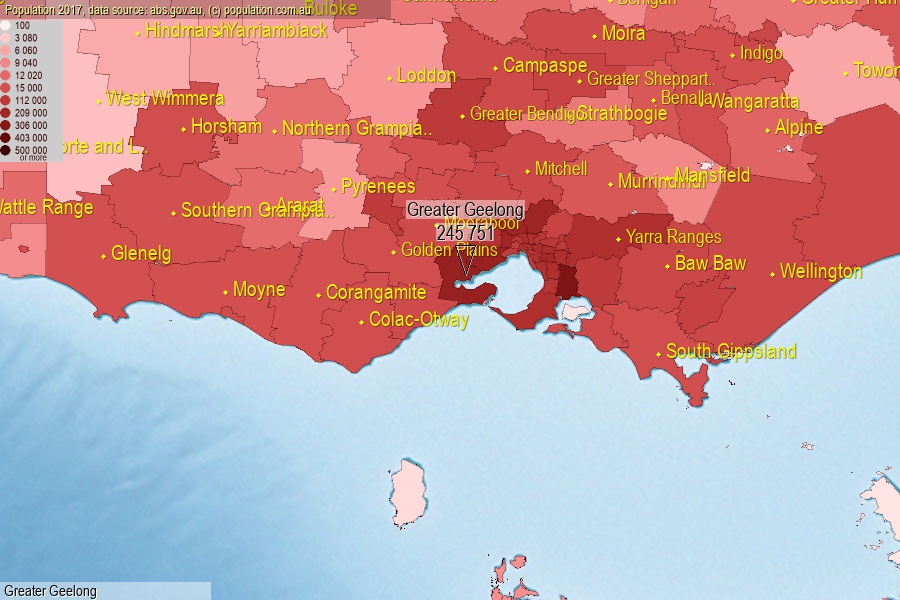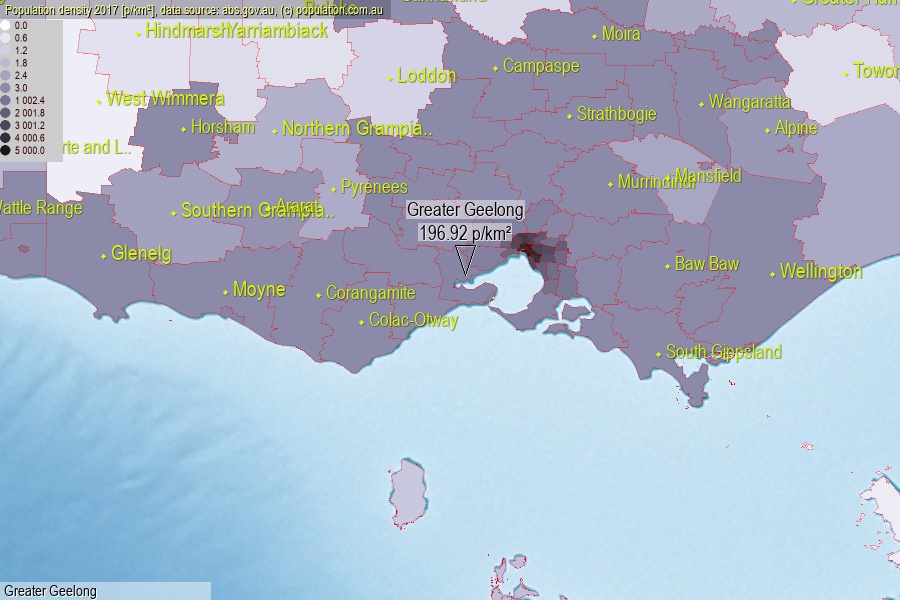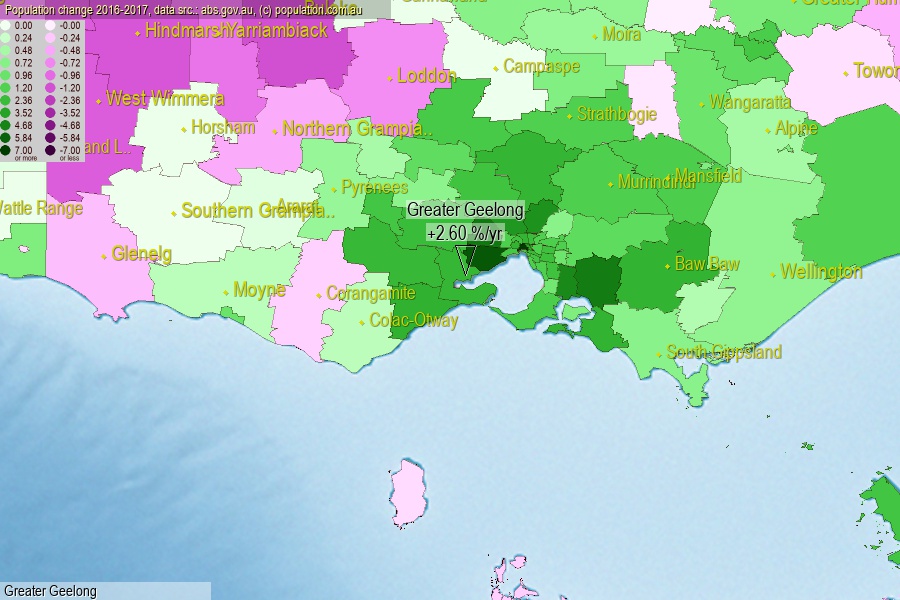 population.com.au
population.com.auLast official estimated population of Greater Geelong City (as Local Government Area) was 245 751 people (on 2017-06-30)[2]. This was 0.99% of total Australian population and 3.822% of VIC population. Area of Greater Geelong is 1 248.00 km², in this year population density was 196.92 p/km² . If population growth rate would be same as in period 2016-2017 (+2.6%/yr), Greater Geelong population in 2025 would be 301 712. [0]



Click to enlarge. Greater Geelong is located in the center of the images.
Population [people], population density [p./km²] and population change [%/year] [2]
[1996-2001] +0.84 %/Y
[2001-2002] +1.66 %/Y
[2002-2003] +1.16 %/Y
[2003-2004] +0.80 %/Y
[2004-2005] +0.73 %/Y
[2005-2006] +0.75 %/Y
[2006-2007] +1.14 %/Y
[2007-2008] +1.31 %/Y
[2008-2009] +1.43 %/Y
[2009-2010] +1.51 %/Y
[2010-2011] +1.53 %/Y
[2011-2012] +1.54 %/Y
[2012-2013] +1.92 %/Y
[2013-2014] +1.96 %/Y
[2014-2015] +2.28 %/Y
[2015-2016] +2.83 %/Y
[2016-2017] +2.60 %/Y
[0] Calculated with linear interpolation from officially estimated population
[1] Read more about LGA and Australian Statistical Geography Standard (ASGS) on abs.gov.au
[2] Population data from Australian Bureau of Statistics (Population and density: 2017; change: 2016-2017)
[3] Digital Boundaries: Australian Statistical Geography Standard (ASGS) 2016.